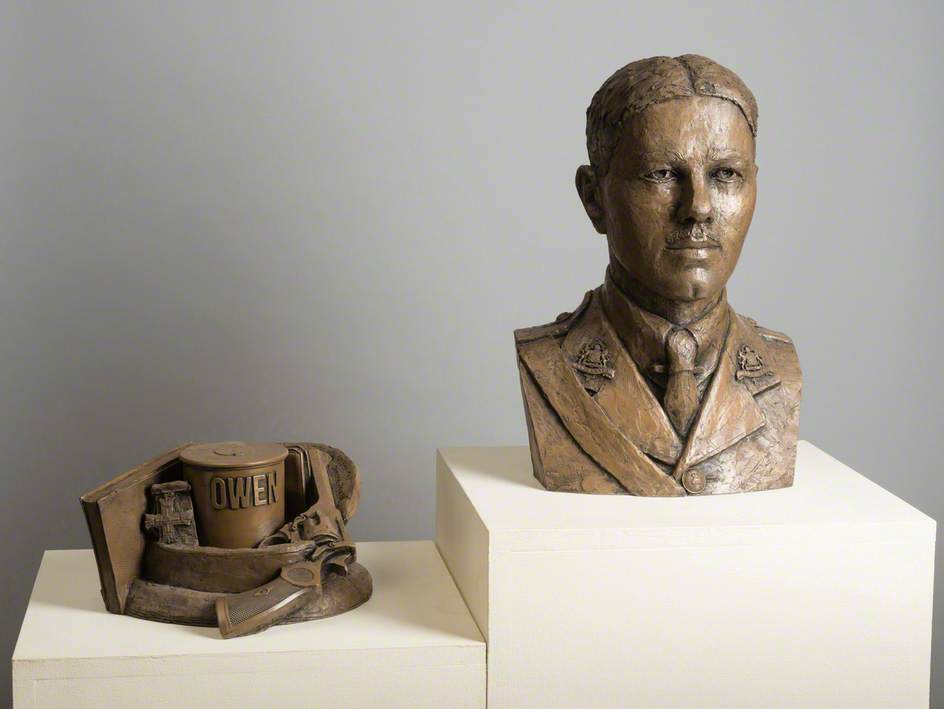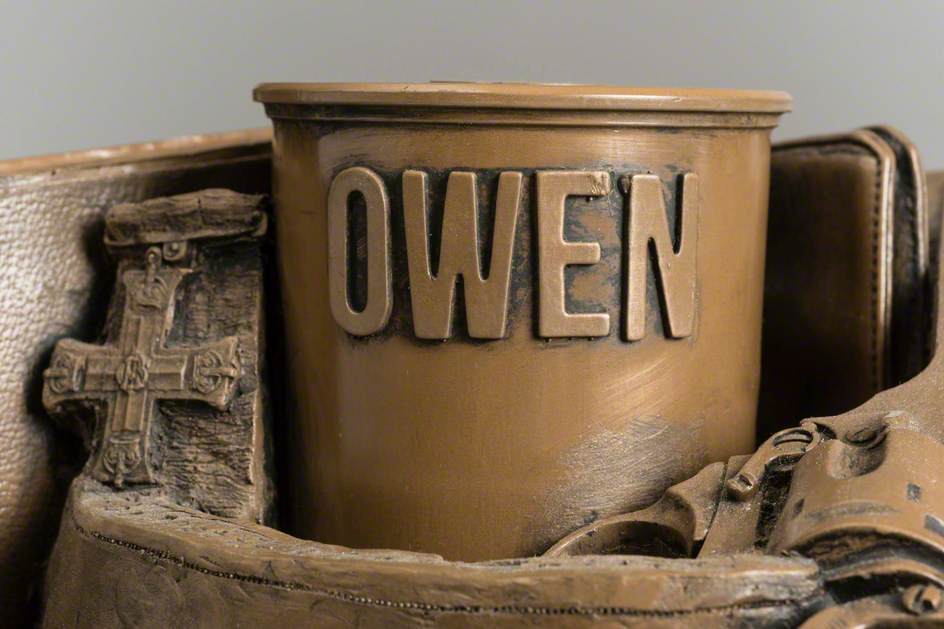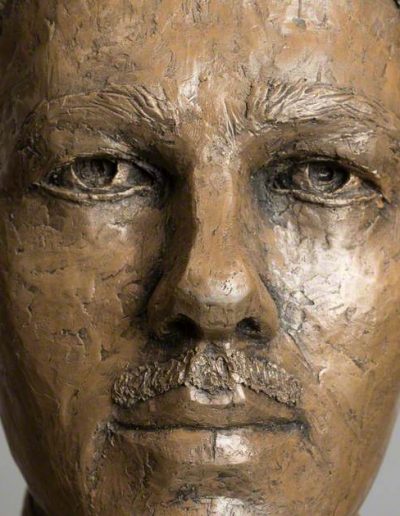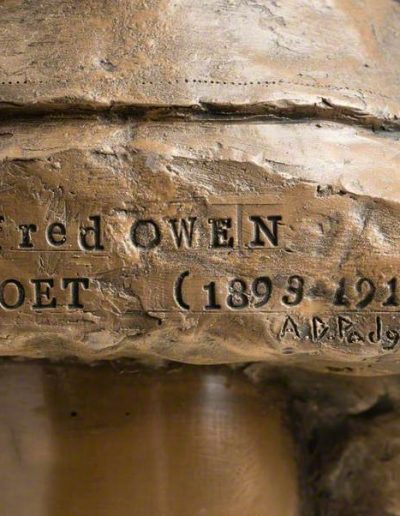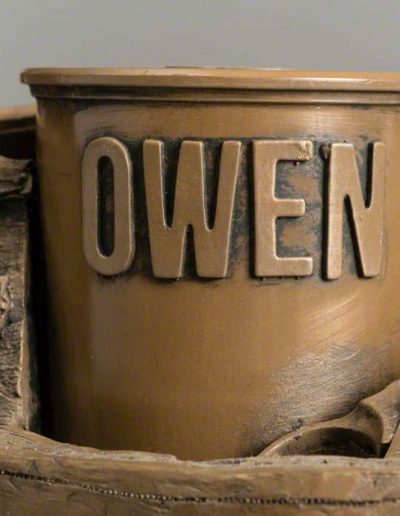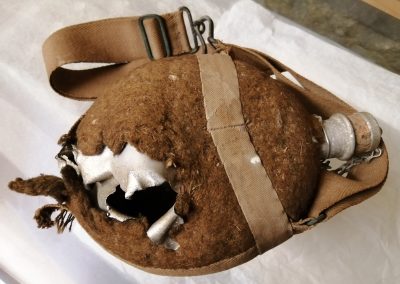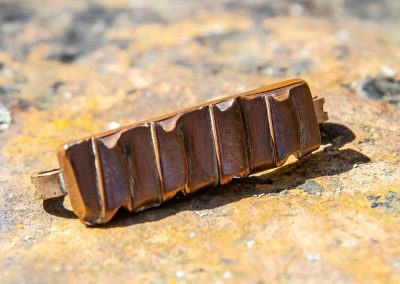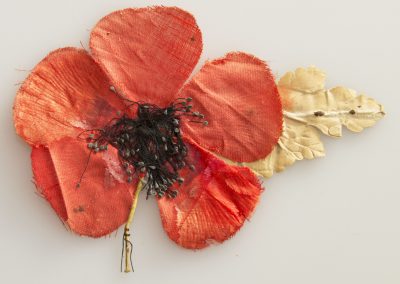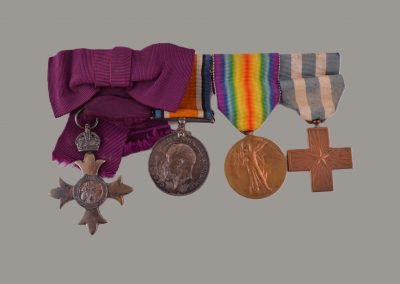Sculpture of Wilfred Owen by Anthony Padgett
In 2016, sculptor Anthony Padgett created a series of bronze sculptures of Wilfred Owen to commemorate the war poet at places of importance to him during his life, including Scarborough and Tameside.
The works are now part of the collections at Scarborough Art Gallery and the Museum of the Manchester Regiment in Tameside (cared for by Tameside museums service/Portland Basin Museum).
The development of the sculpture
The sculpture was made in two parts using clay, with Padgett carefully consulting photos of his subject, before the bronze versions were cold cast. In the bust, Owen is dressed in officer’s uniform. The base consists of a cast from a shell, a Webley pistol and a military cap. There is also a Military Cross medal, which Owen was posthumously awarded for courage and leadership in the Joncourt action in Northern France when the Allies broke through the Hindenburg Line.
This sculpture of Owen marked a change in style for the artist, to a modern (though still traditional style) from the ‘Georgian style’ of previous works.
The importance of Owen and this artwork to the sculptor
Whilst researching for the work, Padgett read Owen’s writings and visited places that Owen had lived and worked. During this process, Padgett also uncovered a lost early publication of Owen’s work.
Padgett made other sculptures of Owen, including one now at Craiglockhart, where Owen was in hospital suffering from ‘shell shock’ or PTSD after his experiences in war, including at the Battle of the Somme. It was these experiences that Siegfried Sassoon supported Owen to write about at Craiglockhart hospital. Others busts are in Ripon and Ors (France), as well as Birkenhead, Shrewsbury, Oxford and Dunsden.
Wilfred Owen in Scarborough
Owen spent several months in the town 1917 and 1918, first was stationed at the Clifton Hotel and then, a second time, at Burniston Barracks, before returning to France.
Owen wrote and edited a number of poems of significance in Scarborough. He also met Edith Sitwell there, who was to assist with the posthumous publication of a collection of his poetry.
Highlights of the project
One of Padgett’s favourite achievements in the project was to have a bust in the Museum of the Manchester Regiment in Tameside. He said: “I feel that this is poignant as Owen was an officer of the Manchester – so it means that many of the soldiers he wrote about were from the Manchester area. It reminds us that these were real people that he commemorated in verse. And a commemoration of Owen is also a commemoration of these men.”
Previously, Padgett had created a sculpture of another British poet, Humbert Wolfe, Padgett’s great, great uncle, which was made as an extension of some family research.
Watch The Video
Watch The Video With Subtitles
Talking Points
Why do you think we like to commemorate people in particular places? Do you think it’s important to remember Wilfred Owen in the places that he was based – such as Scarborough when recuperating, or Ripon where he was based at the Ripon Army Camp?
What clues can you spot that he was a military figure? What other symbols do you think could have featured?
What impression do you get of Wilfred Owen from the sculpture? Why do you think that Padgett made him slightly larger than life?
Bronze sculptures are all one colour. Do you think this affects the impression we get?
The work was modelled in clay but the final product was cast in bronze. Do you think this makes it seem more valuable? Why do you think Padgett didn’t leave the sculpture in clay?
Do you like it overall?
Do you think a sculpture is a good way to remember someone? Who would you like to commemorate in an artform?
Vocabulary
Posthumous: referring to something that happened after the person’s death
Cold-cast bronze: this is an alternative to hot-cast or foundry-cast bronze, created by blending bronze powder with a resin
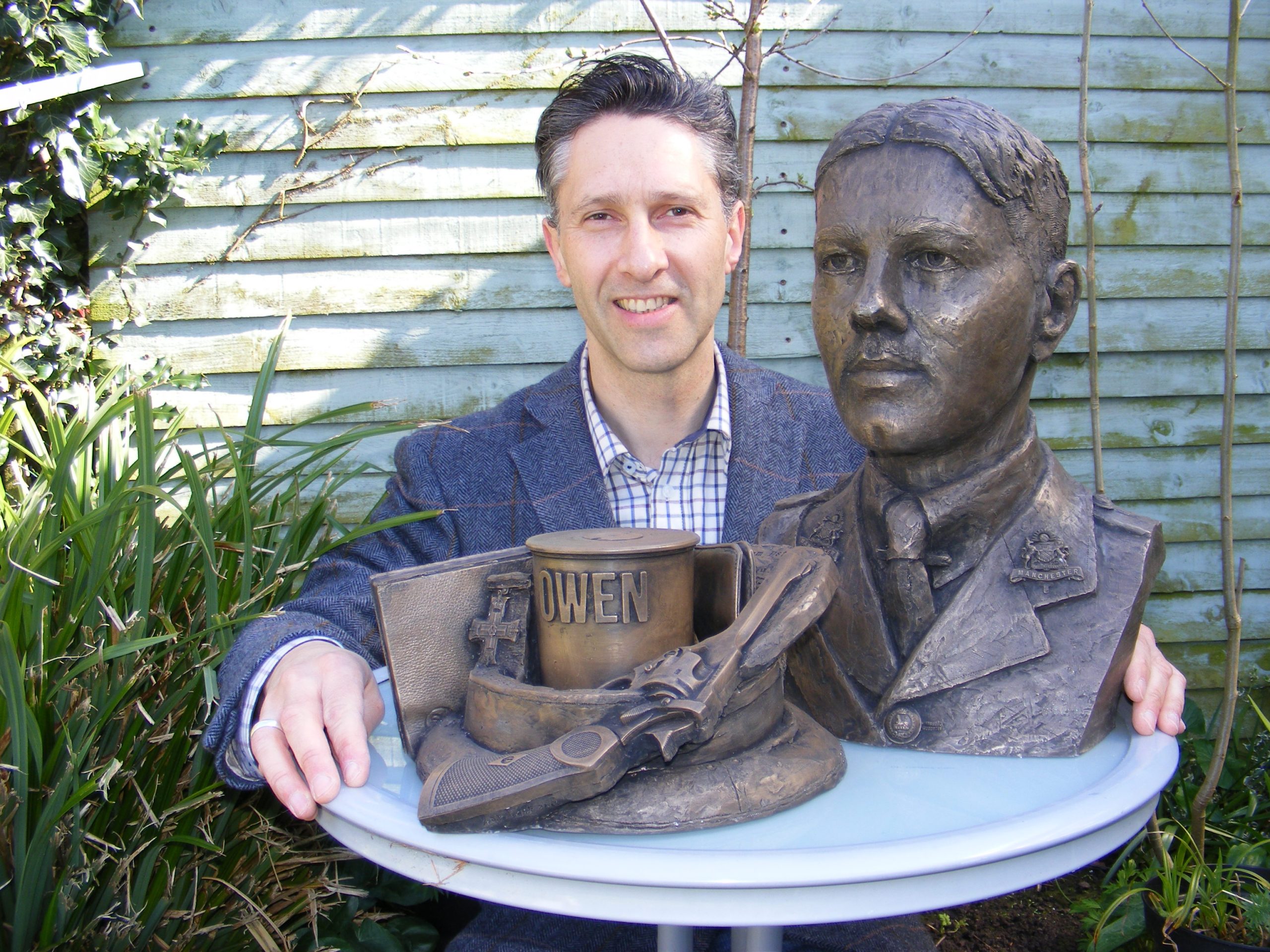

Hands on History
You can borrow World War One loan boxes from Scarborough Museums and Galleries and Beck Isle Museum in Pickering.
Scarborough Museums and Galleries also run a creative workshop on the theme of World War One.
The Museum of the Manchester Regiment is currently closed and the collection is being cared for by the Portland Basin Museum and Tameside museums service. You can borrow loan boxes to explore the First World War and on a Remembrance theme.
Explore more objects about the First World War

